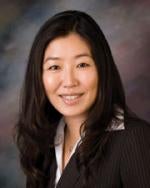The US Court of Appeals for the Federal Circuit denied an accused infringer’s petition for rehearing en banc and issued a modified opinion with additional analysis maintaining its prior finding that patent claims directed to a method of preparation were patent eligible. Illumina, Inc. v. Ariosa Diagnostics, Inc., Case No. 19-1419 (Fed. Cir. Aug. 3, 2020) (Lourie, J.) (Reyna, J., dissenting).
In its original decision in Illumina v. Ariosa, the Federal Circuit found that claims directed to methods of preparing a fraction of cell-free DNA that is enriched in fetal DNA were not directed to a patent-ineligible natural phenomenon. In its modified opinion, the Court again concluded that the claims were patent eligible under § 101 because they were not directed to a natural phenomenon, but to an exploitation of that natural phenomenon, by inventing a method for preparing a mixture enriched in fetal DNA that selectively removed maternal DNA. In the modified opinion, the majority further explained that the claimed size thresholds were not dictated by any natural phenomenon, but were “human-engineered parameters that optimize the amount of maternal DNA that is removed from the mixture and the amount of fetal DNA that remains in the mixture in order to create an improved end product that is more useful for genetic testing than the original natural extracted blood sample.” The Court emphasized that the claimed methods achieve more than an observation or detection of a natural phenomenon because the claims include “physical process steps that change the composition of the mixture, resulting in a DNA fraction that is different from the naturally occurring fraction in the mother’s blood.” The Court distinguished Myriad by stating that the claims were ineligible in that case because they covered a gene that the inventors isolated but did not invent, whereas in this case, the inventors claimed an innovative method using human-engineered size parameters to perform the separation—not the separated DNA itself. The Court concluded that the claimed methods were patent eligible under § 101 because they “utilize the natural phenomenon that the inventors discovered by employing physical process steps and human-engineered size parameters to selectively remove larger fragments of cell-free DNA and thus enrich a mixture in cell-free fetal DNA.”
Judge Reyna again dissented, arguing that the claims were patent ineligible under § 101 because they were directed to an undisputed natural phenomenon (i.e., the “surprising” discovery of size discrepancy of cff-DNA in a mother’s blood), and the application of the natural phenomenon used routine steps and conventional procedures that are well known in the art. He explained that “[l]ike in Alice, the claims here are directed to a natural phenomenon because they involve a fundamental natural phenomenon, that cff-DNA tends to be shorter than cell-free maternal DNA in a mother’s blood, to produce a ‘mixture’ of naturally-occurring substances.” Judge Reyna argued that the majority ignored the Court’s “claimed advance precedent” by reasoning that the claims belong in a distinct category of “method of preparation” claims, but such characterization should be treated no differently than any other process claim under a § 101 analysis. He stated that the majority conflated the Alice/Mayo step-one analysis with the step-two analysis by focusing on whether and how the claimed “physical process steps” transform the invention into more than an observation of the natural phenomenon. Judge Reyna also maintained his position that the claims do not survive Alice step two because the three claimed method steps of (a) extracting DNA, (b) producing a fraction of DNA by size discrimination and (c) analyzing a genetic locus were not new, but simply adapted well-known and commercially available laboratory techniques.




 />i
/>i

